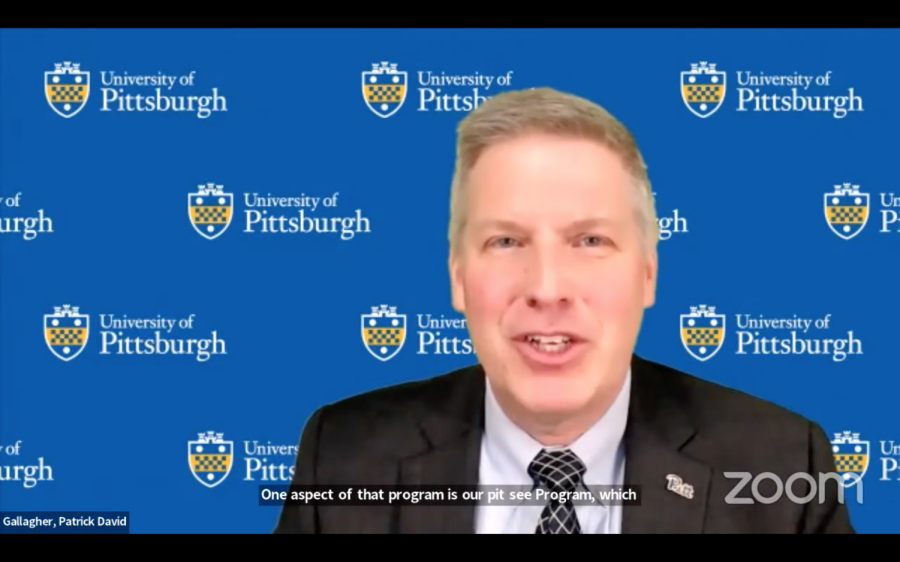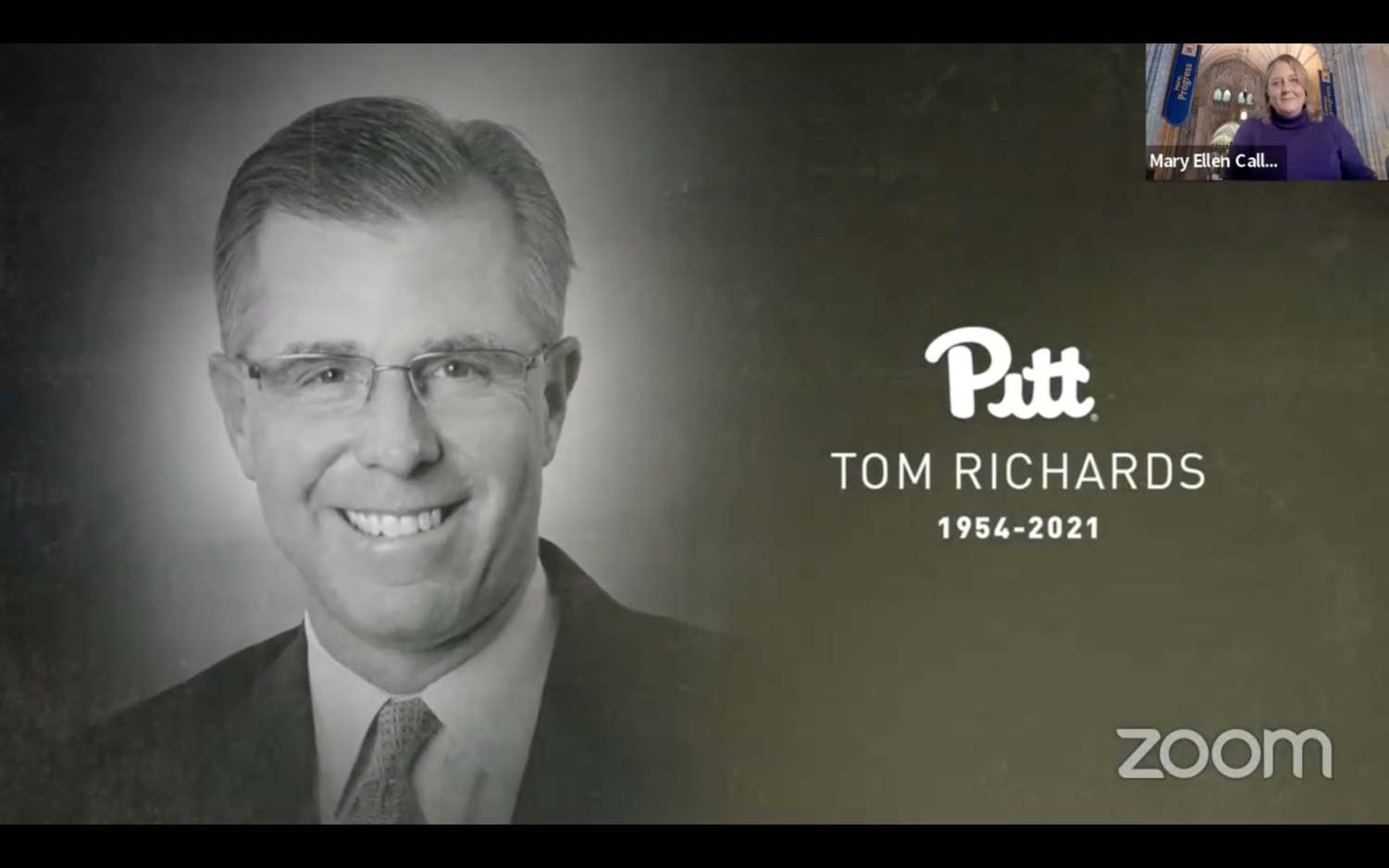Gallagher talks enrollment at Board of Trustees meeting
Chancellor Patrick Gallagher at Friday afternoon’s Board of Trustees meeting.
February 25, 2022
Amid “astonishingly large shifts” in college enrollment, Chancellor Patrick Gallagher said Friday that there are some known drivers for these changes — a forthcoming drop-off in traditional college-aged American students, the COVID-19 pandemic disrupting many students’ plans and prospective students seeming to drift towards more selective universities.
And then, he said, there are some that we “simply don’t know.”
“You’re seeing a striking split between the flagship universities, which by and large are reporting very large increases, and some less selective systems that are seeing significant downward admissions,” Gallagher said. “I think we simply don’t know how persistent this trend will be. It has happened so fast that it is stressing the admissions processes.”
Gallagher spoke at Friday afternoon’s Board of Trustees meeting about changing enrollment dynamics in higher education and what to expect at Pitt for the coming years as the COVID-19 pandemic subsides. He also praised achievements from different parts of the Pitt community. As part of the meeting, the board honored late chair Tom Richards, among other actions.
He walked the board through some of the many factors that are currently affecting, or are expected to affect, college enrollment.
One is expected demographic decline due to a drop in the immigration rate, as well as the birth rate during the Great Recession, which would cause a decrease in the number of traditional high school students heading to college. But he said the expected drop has “nothing to do with” the current decline, and is “not enough to explain what’s happening right now,” since the “cliff” would not occur until 2026 — roughly 18 years after the birth rate began declining.
Gallagher added that while a decrease in international students that intensified during the pandemic “could certainly change admission levels,” it has a “relatively small effect” for several reasons, including that the percentage of these students is not large enough to drive large national changes.
He said the current dip is “completely attributable” to “demand” from students, not the “supply” of university programs, and listed several reasons he believes are behind this. These include deferral and uncertainty due to COVID-19; the job market; the cost of college; online vs. in-person options for education; test-optional admissions and an increasing number of applications per student.
Despite Pitt seeing large increases in applications — more than 50,000 for fall 2022, a nearly 57% spike compared with the previous year — Gallagher said the Office of Admissions and Financial Aid has “probably never worked harder and with less certainty about how decisions will be made.”
“We’re very proud of the fact that we’re seeing this demand. We think it reflects a very strong reputation and brand that certainty seems to be at least part of the dynamics here,” Gallagher said. “Amidst all this uncertainty, students are electing to increase the number of applications and go for, sort of, marquee programs, high-recognition programs. I’m delighted that Pitt is in that category.”
He cautioned that these changes are part of a national dynamic with “uncertain impacts,” given that many schools are not significantly increasing their class sizes and thus rejecting more students, which Gallagher called “not sustainable in the long run.”
Gallagher also praised achievements from various community members later in the meeting.
He highlighted the recent book “Until I am Free: Fannie Lou Hamer’s Enduring Message to America” by Keisha Blain, an associate professor of history, which Smithsonian Magazine named as one of the 10 best history books. He also mentioned that two Pitt projects arrived late last year on the International Space Station, one of which is a high-resolution telescope “about the size of a toaster oven” which is strong enough to be able to see a parked car.




